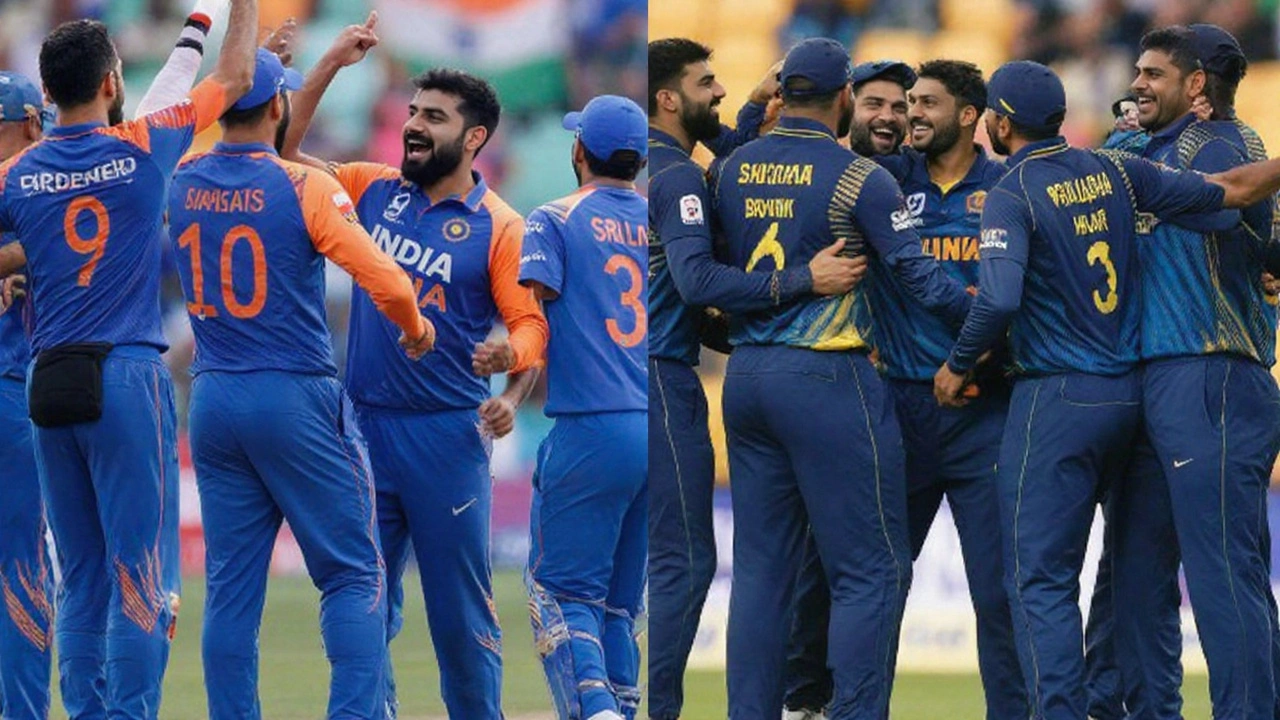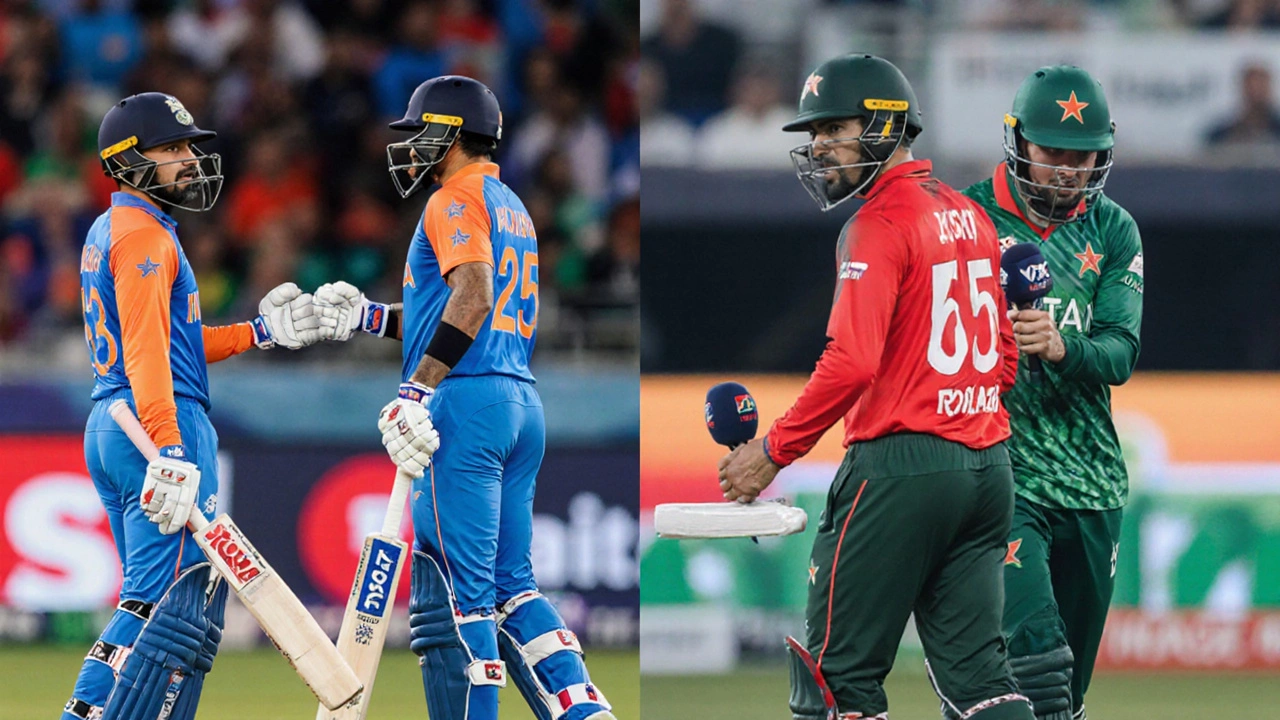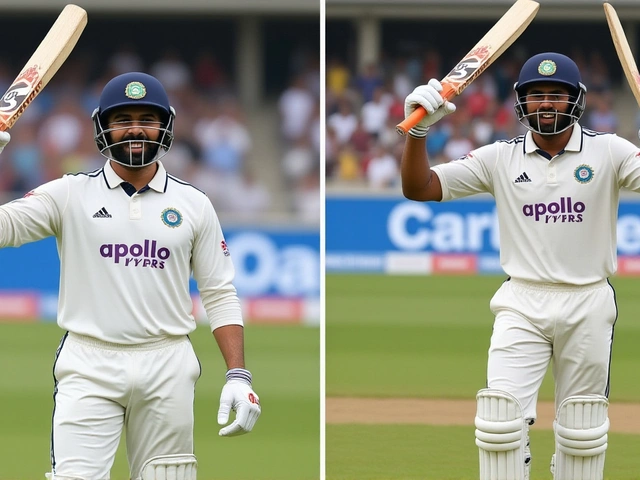Pakistan Edge Bangladesh in Asia Cup 2025 Semi-Final, Setting Up Epic India Showdown

- Kieran Montague
- 26 September 2025
- 0 Comments
The Semi‑Final Drama at Dubai
When the lights went up at Dubai International Stadium on Thursday, nobody could have guessed just how tight the Asia Cup 2025 semi‑final would get. Pakistan won the toss and chose to bat, a decision that at first glance seemed risky given the flat pitch that’s been handing plenty of runs to teams throughout the tournament. Still, the Paks managed a modest 135 for 8 in their 20 overs – a total that looked shaky but, as the innings unwound, proved just enough.
The opening partnership gave hope, but wickets fell like dominoes whenever the side went past the 30‑run mark. Shahid Afridi’s younger brother, Shaheen, tried to steady things with a quick 30‑run cameo, but the momentum never quite clicked. In the end, the Paks finished with a below‑par score that left fans whispering, ‘Can we defend this?’
Bangladesh, after winning the toss in the actual match and opting to bowl, seemed to have the upper hand. Their bowlers kept Pakistan’s run‑rate in check, especially in the powerplay, and the fielding side looked sharp. When the Tigers finally took to the crease, they had a manageable chase ahead – 136 to win. Yet, cricket is a funny game; the pressure of a knockout turned the chase into a cat‑and‑mouse game.
Bangladesh’s top order stumbled early, with Litton Das falling for a low score. Mustafizur Rahman tried to mix it up with his trademark cutters, but the Paks’ bowlers, led by the pace duo Shaheen Afridi and Haris Rauf, kept the scoreboard ticking slowly. Rauf, in particular, became a wizard in the death overs, delivering slower balls that left the Bangladeshi hitters guessing. The Tigers managed 124 for 9, falling short by 11 runs – a margin that felt both tiny and huge in a match where every run counted.
Key moments that tipped the balance:
- Shaheen Afridi’s early breakthrough – taking two wickets in the first five overs, setting the tone.
- Haris Rauf’s clever variation – especially a well‑timed slower ball in the 18th over that yielded a dot and a crucial wicket.
- The spinners’ middle‑over discipline – keeping the run rate under 7 per over, squeezing the Tigers’ chances.
- Bangladesh’s middle‑order collapse – after a shaky start, they never regained momentum.
Salman Agha’s captaincy shone through as well. He kept the team calm, rotating bowlers smartly, and refusing to let the low total dictate the match. The victory was more than just a win; it was a statement that Pakistan could bounce back after a stinging loss to India earlier in the Super 4 stage.

Road to the Historic Final
Pakistan’s path to the final has been a rollercoaster. The team entered the tournament with low expectations after a heavy defeat at the hands of India in their first Super 4 match. Yet, they rallied, taking out Sri Lanka in a closely fought encounter before toppling Bangladesh in this semi‑final. Each win displayed a different facet of the side – from resilient batting to aggressive, disciplined bowling.
Bangladesh, on the other hand, entered the competition with a string of strong T20 performances and a reputation for finishing games strongly. Their early tournament wins raised hopes of a deep run, but the pressure of a semi‑final against a familiar rival proved too much. Despite solid spell from Mustafizur and a few bright moments from the lower order, they could not convert opportunities into runs.
Now the stage is set for an India‑Pakistan showdown that hasn’t happened in an Asia Cup final before. It’s also the first time these two giants will meet in a T20I final in 18 years – the previous big‑stage clash being the 2017 Champions Trophy final in London. The anticipation is off the charts, with fans on both sides already predicting nail‑biting finishes, dramatic last‑ball shots, and a likely post‑match fireworks display.
India’s journey to the final has been relatively smoother. They cruised through the Super 4 phase, posting towering totals and dismantling opponents with a blend of power‑hitting and tight bowling. Their next match against Sri Lanka is a dead‑rubber, but it will serve as a final tune‑up before the showdown on September 28.
What makes this final different from previous meetings is the context. For Pakistan, it’s a chance at redemption after that earlier loss to India and a way to prove that their recent bounce‑back wins weren’t flukes. For India, it’s an opportunity to cement dominance in the sub‑continent and walk away with the Asia Cup trophy for the first time since 2014.
Even the venue seems to be adding drama. Dubai International Stadium has been a batting‑friendly ground all tournament, with high scores in the powerplay and a flat surface that rewards timing. Yet Thursday’s semi‑final reminded everyone that disciplined bowling and smart field placements can still defend modest totals. Expect the final to be a tactical battle – India may lean on their big hitters, while Pakistan will likely lean on their death‑over specialists to keep things tight.
As the countdown to the final ticks, both camps are fine‑tuning strategies. Pakistan’s coaching staff is reportedly focusing on maximizing Shaheen’s swing and Rauf’s slower‑ball arsenal, while India’s bowlers are working on variations that can curb the Paks’ aggressive stroke‑play. Batters on both sides are sharpening their power‑hitting drills, knowing that a single boundary could swing the result.
Fans, meanwhile, are already painting streets, posting memes, and gearing up for what promises to be one of the most watched cricket matches of the decade. Whether you’re a die‑hard supporter or a casual viewer, the stage is set for a high‑octane contest that could rewrite some of the longest‑standing narratives in Asian cricket. The only thing missing is the first ball of the final – and the world will be watching.


